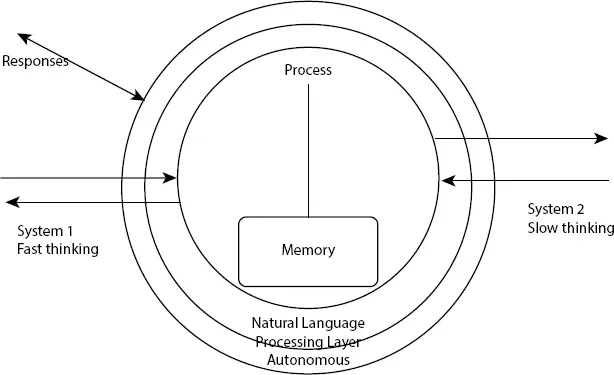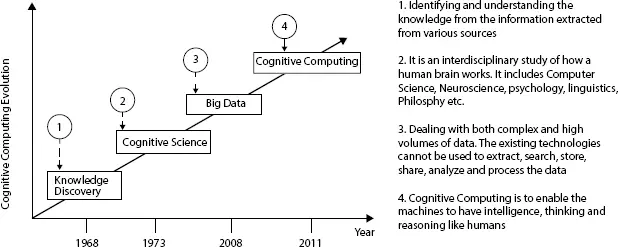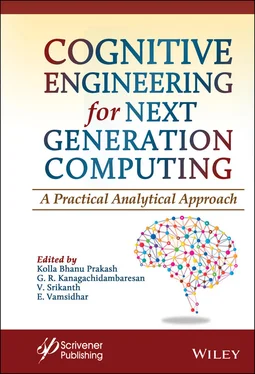System 2: Controlled and rulecentric thinking.
In this process, the reasoning is based on an additional premeditated process. This conclusion is made by taking into consideration both observations and test assumptions, rather than simply what is understood. In this type of system the thinking process to get a postulation, it uses a simulation model and observes the results of that particular statement. To do this a lot of data is required and a model is built to test the perceptions made by System 1. Consider the treatment of cancer patients in which a large number of ways and drugs are available to treat the patients. The cancer drugs not only kill the cancer cells but also kill the healthy cells, making the patient feel the side effects of it. When a drug company comes with any novel drug it tests on animals, records its results, and then it is tested on humans. After a long verification of the data checking the side effects of the drug on the other parts of the body, the government permits to release the drug into the market where it takes a long time from research to availability of that drug. In System 1 when a drug can destroy the cancer cells it determines it can be put onto the market. It is completely biased. System 2 will not conclude as of System 1, it collects the data from various sources, refines it, and then it comes to a conclusion. Although this process is slow it is important to study all the things before jumping to a conclusion. One of the most complex problems is predicting the outcomes as many factors can affect the outcomes. So, it is very important to merge the spontaneous thinking with the computational models.

Figure 1.2 Intuitive thinking and analysis [11].
The cognitive system is based on three important principles
1 Learn
2 Model
3 Hypothesis generation.
1 Learn: The cognitive framework must be able to learn. The framework use information to make inductions about an area, a theme, an individual, or an issue dependent on preparing and perceptions from all assortments, volumes, and speed of information.
2 Model: To learn, the framework it requires to make a model or portrayal of a domain which incorporates interior and conceivably exterior information and presumptions that direct what realizing calculations are utilized. Understanding the setting of how the information fits into the model is critical to a cognitive framework.
3 Generate hypotheses: A cognitive framework expects that there will be several solutions or answers to a question. The most fitting answer depends on the information itself. In this way, an intellectual framework is probabilistic. A theory is an up-and-comer clarification for a portion of the information previously comprehended. A cognitive framework utilizes the information to prepare, test, or score speculation.
1.3 Cognitive Computing Evolution and Importance
The basis for cognitive computing is artificial intelligence. Artificial Intelligence has roots back at least 300 years ago, but in the last 50 years, there is much research and improvement in this field which has impacted the development of cognitive computing. The combined work of the mathematicians and scientists in converting the working of a brain into a model such that it mimics the working of the brain, but it has taken a long time to make them work and think like a human brain. During WW-II England has achieved victory due to the decoding of the messages of the opponent and this is achieved by the great work of Alan Turing who worked on the cryptography. Later Turing worked on machine learning and published a paper “Computing Machinery and Intelligence” in which he put up a question “Can machines think”, he greatly believed that machines can think and also throw away the argument that the machines cannot think as they do not have any emotions like the human beings. In the later years, he came up with the famous Turing test to prove that machines can think as human beings do. From ten many scientists had contributed to the development of artificial intelligence and can be termed as modern artificial intelligence. The cognitive computing is still evolving. Figure 1.3shows how the evolution of Cognitive Computing had taken place over the years.
The main focus of cognitive computing is on processing methods, here the data that is to be processed need not be big. The most important thing in understanding the working of the brain is how a brain can decode the image and it is well known that 20% of the brain working function is allocated for the vision and the working of the brain in the image processing is highly efficient. The brain can do things with limited data and even the limited memory is not affecting the cognition of image information. Cognitive science helps to develop the algorithms required for cognitive computing, making the machines to function like a human brain to some degree of extending [14]. The only way to build up the computers to compute as a human brain is to understand and cognize the things and surroundings in the perspective of how a human brain thinks. The cognitive computing is very much important and critical to building up the cognition of a machine and thereby making it to understand the requirements of humans [15]. There is a necessity to make the machines think like humans and they must be able to make decisions and have some intelligence as of humans, of course, a lot of improvement is to be made in this field. With the help of the present techniques, it is possible to make machines think like humans, as they involve reasoning, understanding complicated emotions. Cognitive computing had made tremendous progress and also exceeded the conventional machine learning. Internet of Things is one technology that had made very good progress and helping the people in many ways and now IoT is embedded with cognitive computing developing a smarter Internet of Things systems assisting the humans in many ways like providing vital suggestions and helping in the decision making [16].

Figure 1.3 Showing the evolution of Cognitive Computing [13].
In today’s world with a lot of sensors around a lot of data is being generated all the time in many forms. The evolution of cognitive computing is to make a sense in this multifaceted world with this large volume of data. The older technologies have been developed to make sense with the structured data and machines, software is also developed to deal with such type of data and gathering information from the structured data. The growth of social site and apps have impacted the growth in the unstructured and semi-structured data and these older technologies are no more a way to handle these types of data and the cognitive computing helps in gathering the information from all types of data Unstructured, Semi-structured, and Structured data. Without the handling of these different types of data, a lot of information can be missed and the cognitive computing is going to help the humans to collaborate with the machines so that a maximum gain can be extracted from them. In the past also we have seen the technology had transformed the industries and also the human way of living from the last decades. Transactional processing had started in the 1950s had brought a lot of transformation in government operations and also in business transactions, giving a lot of efficient ways to deal with the operations. During that time the data was limited and major data is structured data and tools are developed to handle this type of data and many mining tools are developed to extract the information from that data. A large amount of data cannot be handled by the traditional tools and methods, so we need a mixture of traditional methods with traditional technical models with the innovations to solve the niggling problems.
Читать дальше














